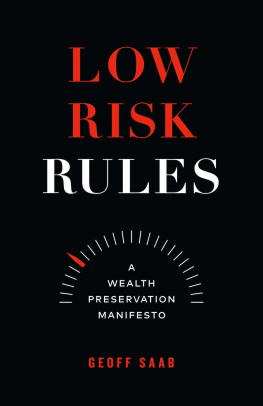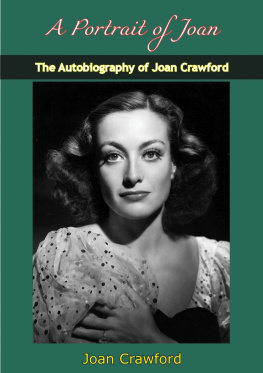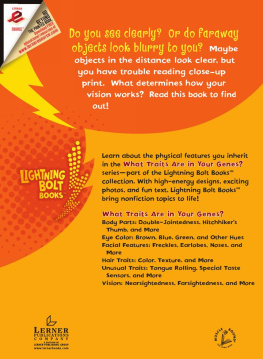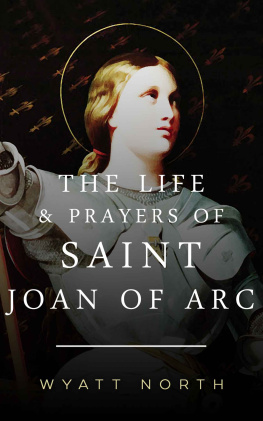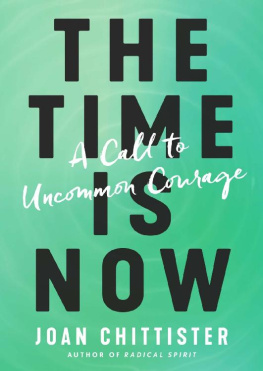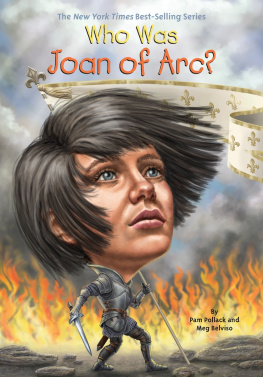Saab A. Joan - Objects of Vision
Here you can read online Saab A. Joan - Objects of Vision full text of the book (entire story) in english for free. Download pdf and epub, get meaning, cover and reviews about this ebook. publisher: Penn State University Press, genre: Religion. Description of the work, (preface) as well as reviews are available. Best literature library LitArk.com created for fans of good reading and offers a wide selection of genres:
Romance novel
Science fiction
Adventure
Detective
Science
History
Home and family
Prose
Art
Politics
Computer
Non-fiction
Religion
Business
Children
Humor
Choose a favorite category and find really read worthwhile books. Enjoy immersion in the world of imagination, feel the emotions of the characters or learn something new for yourself, make an fascinating discovery.
- Book:Objects of Vision
- Author:
- Publisher:Penn State University Press
- Genre:
- Rating:5 / 5
- Favourites:Add to favourites
- Your mark:
- 100
- 1
- 2
- 3
- 4
- 5
Objects of Vision: summary, description and annotation
We offer to read an annotation, description, summary or preface (depends on what the author of the book "Objects of Vision" wrote himself). If you haven't found the necessary information about the book — write in the comments, we will try to find it.
Objects of Vision — read online for free the complete book (whole text) full work
Below is the text of the book, divided by pages. System saving the place of the last page read, allows you to conveniently read the book "Objects of Vision" online for free, without having to search again every time where you left off. Put a bookmark, and you can go to the page where you finished reading at any time.
Font size:
Interval:
Bookmark:

Objects of Vision

Books in the Perspectives on Sensory History series maintain a historical basis for work on the senses, examining how the experiences of seeing, hearing, smelling, tasting, and touching have shaped the ways in which people have understood their worlds.
Mark Smith, General Editor
University of South Carolina
EDITORIAL BOARD
Camille Bgin
University of Toronto, Canada
Martin A. Berger
Art Institute of Chicago, USA
Karin Bijsterveld
University of Maastricht, Netherlands
Constance Classen
Concordia University, Canada
Kelvin E. Y. Low
National University of Singapore, Singapore
Bodo Mrozek
University of Potsdam, Germany
Alex Purves
University of California, Los Angeles, USA
Richard Cullen Rath
University of Hawaii, USA
Objects of Vision
Making Sense of What We See
A. Joan Saab
The Pennsylvania State University Press
University Park, Pennsylvania
Library of Congress Cataloging-in-Publication Data
Names: Saab, A. Joan, author.
Title: Objects of vision : making sense of what we see / A. Joan Saab.
Other titles: Perspectives on sensory history.
Description: University Park, Pennsylvania : The Pennsylvania State University Press, [2020] | Series: Perspectives on sensory history | Includes bibliographical references and index.
Summary: Examines a series of linked case studies that not only highlight moments of seeming disconnect between seeing and believing, including hoaxes, miracles, spirit paintings, manipulated photographs, and holograms, but also offer a sensory history of ways of seeingProvided by publisher.
Identifiers: LCCN 2020035744 | ISBN 9780271088105 (hardback)
Subjects: LCSH: Visual perception. | ArtPsychological aspects.
Classification: LCC N7430.5 .S235 2020 | DDC 152.14dc23
LC record available at https://lccn.loc.gov/2020035744
Copyright 2020 A. Joan Saab
All rights reserved
Printed in the United States of America
Published by The Pennsylvania State University Press,
University Park, PA 168021003
The Pennsylvania State University Press is a member of the Association of University Presses.
It is the policy of The Pennsylvania State University Press to use acid-free paper. Publications on uncoated stock satisfy the minimum requirements of American National Standard for Information SciencesPermanence of Paper for Printed Library Material, ansi z39.481992.
FOR STEVE, FINN, AND WILSON
Contents
My son jokingly suggested that I make sure to thank all the saints and spirits whose shrines and sites I visited while researching this project: the Virgins of Guadalupe, Fatima, Montserrat, and Lourdes in the Bronx, Saint Anne de Beaupr, Kateri Tekakwitha, Saint Jude, the Fox sisters, the mediums of Lily Dale, the witches of Enchantments magic candle store in the East Village, Stevie Nicks... the list goes on and on. It was my interlocutors here on earth, however, who enabled me to successfully write this book and that list is longer still.
My colleagues at the University of Rochester supported me in ways that are hard to fully capture. Nora Rubel, a kindred spirit, read the entire manuscript (some parts more than once) and pushed me to actually finish the thing. She, along with Rachel Haidu, constituted my perfect scholarly coven. John Michael, Janet Berlo, and Christopher Heuer read drafts of the introduction and helped me clarify my disparate thoughts to frame my argument. Joel Burges listened to me go on and on about the materiality of visions. Tanya Bakhmetyeva shared valuable material on Conan Doyle. Rio Hartwell assured me that the work made sense and, in some cases, showed me how it did so and Laura Smoller pointed me towards sources of wonder. Id like to thank Joanie Rubin in the Humanities Center and Gloria Culver, Dean of Arts and Sciences, for suggesting me for the inaugural Nazarian lecture where I first presented some of this material (and to Ani and Mark Gabrellian for funding the series). Marty Collier, Lorna Maier, and Tricia DiQuattro provided invaluable administrative support (and blocked my calendar when I most needed it).
I had the very good fortune to work with some outstanding students in the Graduate Program in Visual and Cultural Studies. In particular Id like to thank Ouma Amadou and Victoria Taormina who worked magic to locate images and permissions. I am also grateful for the students in my seminar on Digital Culture in the Material Age, who patiently let me test out some of my examples in class. They may not believe that precipitated paintings really appear out of thin air, but they were playful and very sharp discussants. Almudena Escobar Lopez and Mimi Chen were also a great help. Two former VCS students and now my co- editors, Aubrey Anable and Cat Zuromskis, were incredibly patient with me when I missed deadlines or privileged this project over our shared volume. For their understanding and tolerance, I am most grateful.
Andrea Reithmayr in the Rare Books Collection in the University of Rochester Library was an invaluable resource. Not only did she share my interest in nineteenth-century Spiritualism, she seemed able to conjure sources whenever I needed them. Shannon Taggart told me where to find an early spirit trumpet and Brandon Hodge of the Mysterious Planchette confirmed my skepticism about the Fox sisters table and pointed me toward other examples of seance tables in early Spiritualist literature.
I want to thank Mark Smith for having faith in me to write this volume, and Martin Berger for recommending me to Markas well as for reading drafts of grant applications along with Tom DiPiero. At Penn State University Press I want to thank Kendra Boileau and her super assistant Alex Vose for identifying two fantastic outside readers, one of whom was Lisa Cartwright, who has been an inspiration and a mentor to me since my first day on the job at the University of Rochester. Lisas comments helped me to crystalize the project around the idea of objects of vision, and the work is much, much stronger for her care and attention. I would also like the production team at PSU, in particular Nicholas Taylor for his extraordinary copyediting skills.
Finally, I want to thank my family. As always, my parents Maureen and Richard Saab have been my biggest cheerleaders and still dont seem to think it weird when I go off in search of the seemingly bizarre. And to Steve, Finn, and Wilson Brauer, who joined me on my search. To Finn, who gamely came with me on an eight-hour pilgrimage to Canajoharie, New York, to see where Kateri was born. For Wilson, who didnt seem to mind when we left the Baseball Hall of Fame to see the Cardiff Giant. And to Steve, who visited more shrines, tracked down more spiritualist ephemera, and accompanied me to countless makeshift museums and random archives. For the three of you, in the words of Fox Mulder, I want to believe.
Prologue
In Memory of...
On the evening of March 3, 1991, the Los Angeles evidence to convict any of them.
Ironically, the video was key to the officers acquittal. At the
The attorneys for the accused, however, deployed the videotape as part of a larger story about the dangerous nature of police work in an attempt to justify
The final verdict in many ways hinged on the narratives each side used to frame the video and its images. And, as poet Elizabeth Preying on long-standing local anxieties about race and the Los Angeles Police Department, the attorneys for the accused officers framed their interpretation of the evidence to fit their narrative. In the end, rather than see the videotape as White had hoped, as showing conclusively what happened that night and to believe... [their] own eyes, the jurors, many of whom shared the same cultural filters as the accused officers, saw the tape as part of a broader narrative of the dangers of policing and rendered a verdict of not guilty.
Font size:
Interval:
Bookmark:
Similar books «Objects of Vision»
Look at similar books to Objects of Vision. We have selected literature similar in name and meaning in the hope of providing readers with more options to find new, interesting, not yet read works.
Discussion, reviews of the book Objects of Vision and just readers' own opinions. Leave your comments, write what you think about the work, its meaning or the main characters. Specify what exactly you liked and what you didn't like, and why you think so.


